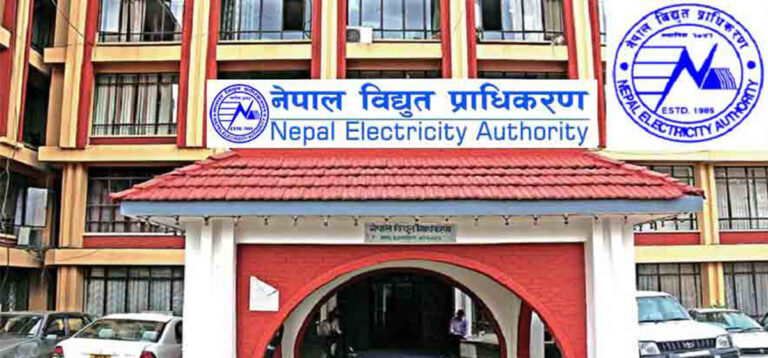
The Nepal Electricity Authority (NEA) has implemented the necessary process and criteria to move the electrical structures (wires, poles and transformers) of the distribution system constructed to supply power to consumers.
The NEA has made the work of moving the structure systematic through the “Procedure on Electrical Structure Transfer.” The arrangements have been made in the working procedure for the transfer of electrical structure, technical inspection, approval officer, expenses incurred during the transfer and the obligation to be fulfilled.
The NEA will relocate the structures including 400/230 volt (LT line), 11 kV and 33 kV line wires, poles and transformers connected to them only if it is feasible after technical inspection.
In various urban areas of the country, including the Kathmandu Valley, requests have been made to the NEA by government bodies, local levels, consumer committees, individuals and organisations to move the electrical structures in the course of road expansion. The NEA has made arrangements to move the electrical structures only if it is deemed appropriate by the technical inspection and ensures that there is no protest at the place of transfer.
The NEA is confident that the procedure of transferring structures, including electric poles, wires, transformers, approving authority and who will bear the cost of relocation is clearly managed in the working procedure.
Managing Director of NEA Kul Man Ghising said that a policy arrangement has been made to address the complaints from various quarters, such as obstruction of urban beauty and obstruction of road expansion.
“We have heard a lot of people saying that they will move the poles. We have set clear procedures and criteria to control and manage it,” said Ghising.
“People who are in trouble can go to the local office of NEA and apply to solve the problems without following the people who come saying that they will move the poles. After that, the process of technical scrutiny will proceed as per the procedure. The structure will be moved only if it seems possible with options, otherwise it will remain the same,” he said.
The provision has been made to apply to the concerned local office of NEA for the transfer of the existing structure of NEA’s existing power distribution system on the land where the house or compound of the person or organisation is located.
Along with the application, documents including citizenship, copy of land ownership certificate, recommendation of the concerned local level should be submitted. However, any office of the government of Nepal or a government-owned entity must send a letter stating the reasons for the transfer.
The chief of the local office of NEA should conduct a technical check within 15 days of receiving the application for transfer of structure.
On-the-spot inspection of the site will be carried out on the basis of easy access to maintain the electrical structure, the structure will be organised and safe and others will not be affected, read the press statement of NEA.
Responsible persons have been assigned to approve the transfer if it seems appropriate in the on-site report through the procedure.
The approval of the 400-230 voltage level distribution line will be given by the head of the concerned provincial division office. Approval to move the 11 kV level distribution line for road expansion will be given by the Deputy Executive Director of Distribution and Customer Service Directorate. Approval will be given by the managing director to move 11 kV privately owned property of individuals and organisations and a 33 kV line for road expansion. The Board of Directors will approve the transfer of 33 kV and 11 kV ringmen lines owned by individuals and institutions.
The provision has been made that the overhead line on private land cannot be placed underground in the same land.
If the structure of other bodies (telecommunication, cable, drinking water, etc.) is affected, the consent of the concerned body has to be submitted.
At the request of the locality, 70 per cent of the cost of relocating the electrical infrastructure will be borne by the local level and the remaining 30 per cent will be borne by the authority. If the structure has to be transferred at the request of the individual/institution/body, the applicant will have to bear the entire cost. The NEA will complete the transfer of pole within three months, six months and a year of the cost deposited by applicants based on cost estimates up to Rs. 500,000, Rs. 500,000-2,000,000 and more than Rs. 2,000,000.
Source : TRN,






